AYUTTHAYA (Day 11 - part 2)
Wat Phra Si Sanphet (Temple of the Holy, Splendid Omniscient... aka the Buddha) is the largest temple in Ayutthaya and is known for its row of chedis (Thai-style stupas). It was the holiest temple on the site of the old Royal Palace (built in 1350) until the city was completely destroyed by the Burmese in 1767.
In 1491, King Ramathibodi II built two of the chedis to enshrine the ashes of his father and older brother. Three decades later, a third chedi was constructed to enshrine his own ashes.

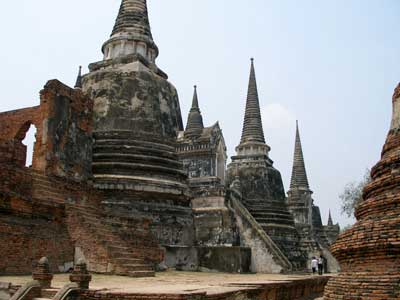

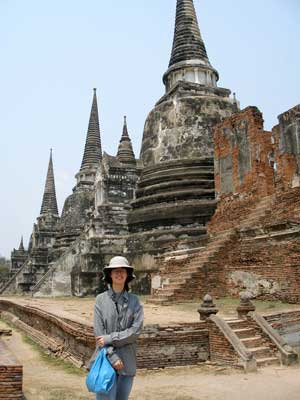

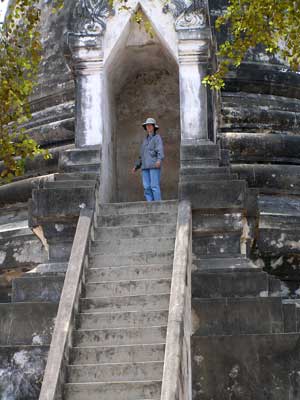
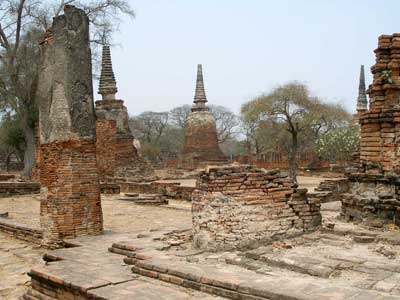


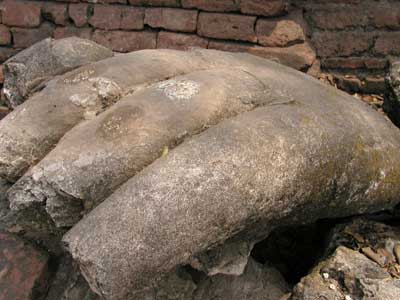
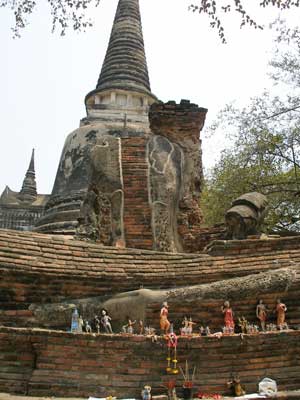

Next door was Wihan Phra Mongkhon Bophit (Temple of the Buddha of the Holy and Supremely Auspicious Reverence). There were many many locals about. We took off our shoes and went in. The ground was surprisingly very hot! Gold leaf was flaked all over.


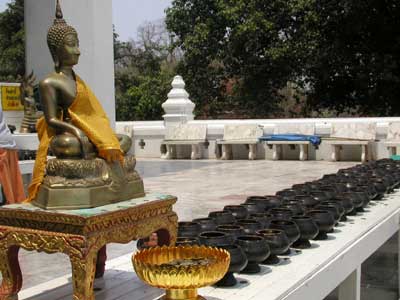


The large bronze Buddha was cast in 1538. It's one of the largest in Thailand, at 41 feet tall and 31 feet wide. In the early 1700s, the original temple was struck by lightning. The roof collapsed on the statue, breaking off the head at the neck. It took two years to build a new hall. Eventually the head, as well as a broken right arm, were repaired.
We grabbed a songthaew to the boat pier. While some of the temples are best reached by land, a boat ride down the Chao Phraya River is a good way to visit others.
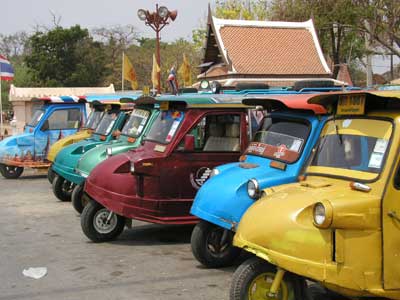

A songthaew is a shared taxi pick-up truck. Sometimes you have to wait a bit for it to fill up, but it's cheaper than a taxi or a tuk tuk (a three-wheeled taxi).

It was a tight squeeze with three of us!
We haggled for a boat ride, from 900 Baht ($22.50) down to 500 Baht (about $12.50). It was a very pleasant ride through the murky green water.
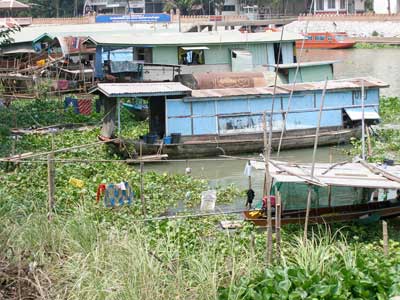

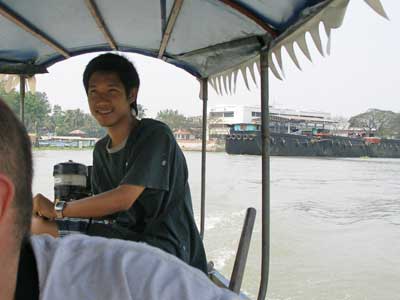
Our boatman was simply named "T". The Thai often have EXTREMELY difficult names for most Westerners to pronounce, so those in the tourist business usually just pick an easier name, word, or yes, just letter.

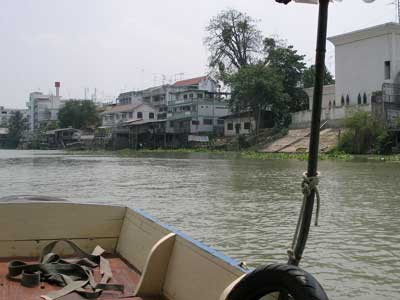
Our first stop was Wat Phanan Choeng. Dating back to 1324, it is the oldest documented temple in Ayutthaya, before it became the capital.
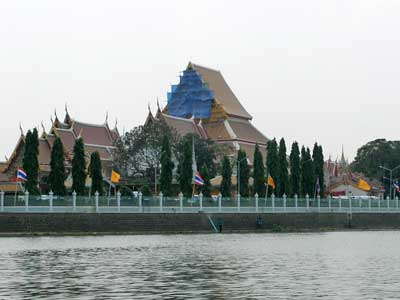

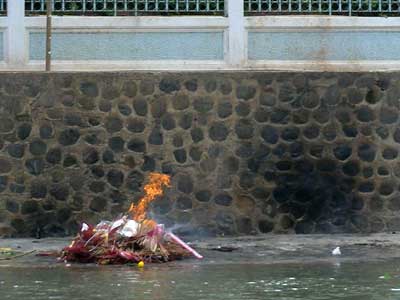
A fire burns on the temple banks.


Off of a main pier, many people were feeding ENORMOUS striped catfish! They jumped and wriggled and splashed quite a bit.
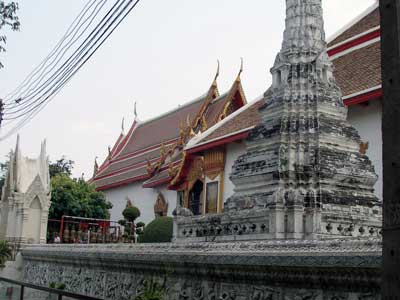
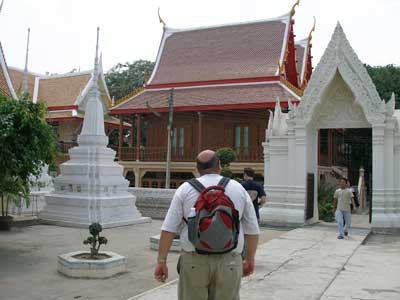
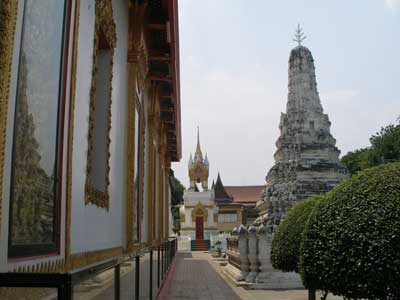





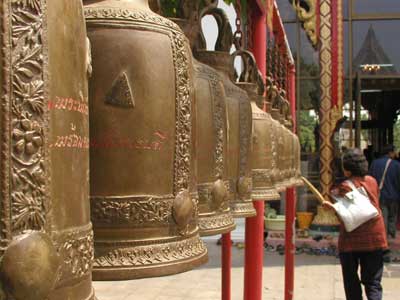
Ringing the bells
The bell and dorje ('thunderbolt of enlightenment' - the abrupt change in human consciousness as a pivotal event in the lives of mystics and saints) are inseparable ritual objects in Tibetan Buddhism. In this case, the dorje is the top of the bell. The bell represents the female aspect as wisdom; the dorje is the male aspect as method. Together they are the attainment of Enlightenment.

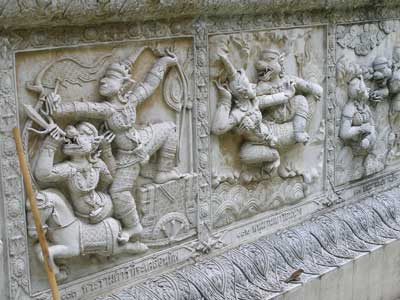

Carved reliefs
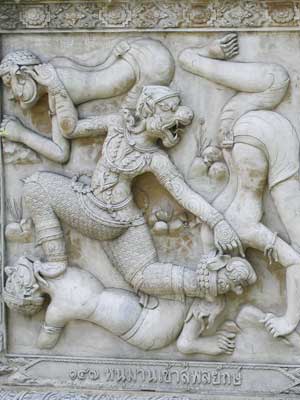

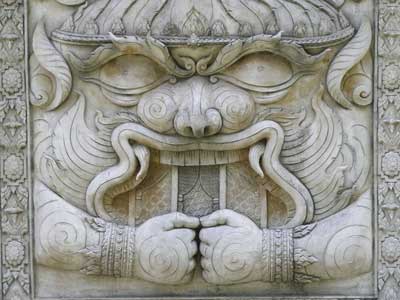


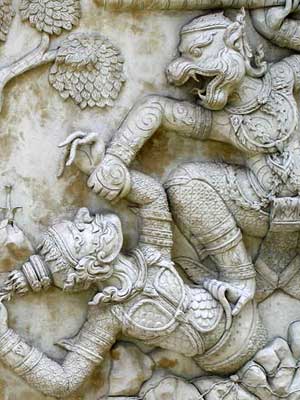
Inside the temple, it was very very hot. Even the locals were sweating. The place was packed with folks and there were many ceremonies going on.

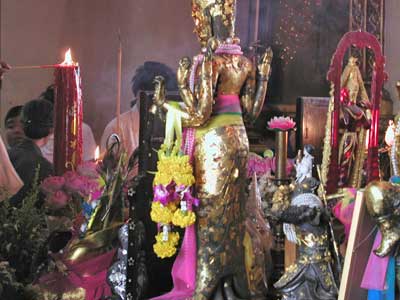
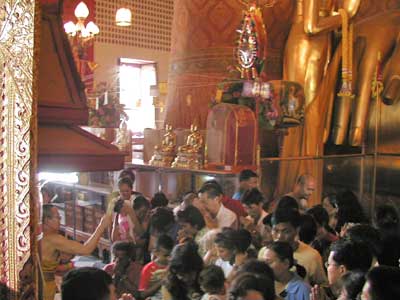

Blessings from a monk

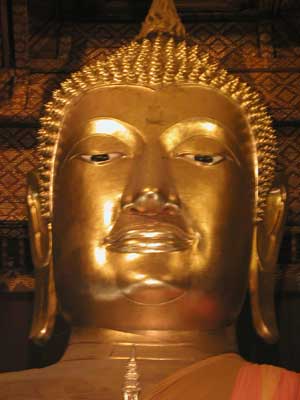
The massive 62-foot tall Buddha (Phra Phanan Choeng) was built in 1324 from brick and stucco, then lacquered and gilt (thinly covered with gold leaf or paint).
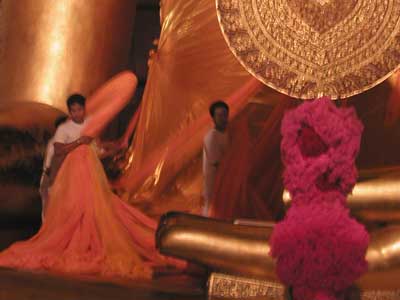
He was having his sash changed.
return • continue

